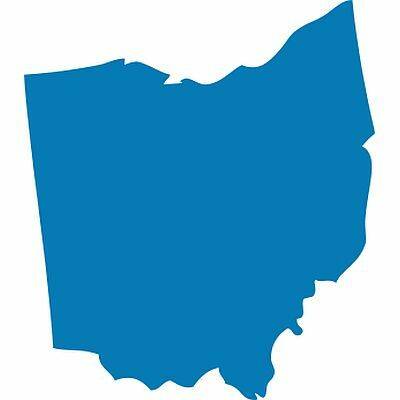NELSONVILLE (AP) — Some 40 Native American tribes have ancestral ties to Wayne National Forest, a quarter-million acres spread across portions of Appalachian southeastern Ohio. Their citizens have never stopped helping the U.S. Forest Service manage this expanse of forested hills, hollows, streams and lakes — even as the name recalls a violent past.
Now, a vigorous debate is underway over a Forest Service proposal to replace the name of Gen. Anthony Wayne, a founding father who Americans of an earlier era celebrated as an “Indian fighter,” with something more neutral: Buckeye National Forest, after the state tree.
Forest Manager Lee Stewart said tribes had been asking for a name change for decades, but their request was formalized last year as part of a sweeping review of derogatory place names undertaken by the Biden administration.
Since 2021, the names of about 650 places and geographic features across the country have been renamed, with involvement by the same federal board that in earlier eras helped get rid of the N-word and a pejorative word for Japanese.
“In thinking of the offensive nature (of the name) to tribes, it’s the opportunity to begin to heal, to begin to connect our forest deeper than just around a name,” Stewart said. “Ohio has thousands of years of history. The history here is very, very deep — pre-history to historic times, where Wayne occupies his space, to the history once we became a state. So Buckeye, we feel, reflects that.”
The public comment period ends Monday, with U.S. Agriculture Secretary Tom Vilsack to receive the feedback and make a final decision. It would be the first national forest renaming since 2007.
Proponents see the name change as an act of respect for Indigenous people whose ancestors lived on the land and whose citizens continue to offer their skill and expertise to stewardship of the land, some through treaties with the U.S. government.
The forest’s 381 square miles (987 square kilometers) are used for timber and other natural resources, in addition to featuring campgrounds, a horseback riding network and off-highway vehicle trails.
Before a federal government purchase in 1934, the land was dug, blasted and mined for coal. It was 1951 when the forest was named for Wayne, a Revolutionary War leader whose legacy has been revisited during the nation’s recent racial reckoning.
Wayne commanded Army forces during the Northwest Indian War, a confrontation on the American frontier that ended with the Battle of Fallen Timbers, a key victory over confederated Native forces that allied with the British. The resulting truce, the Treaty of Greenville, largely ceded Native rights to most of the territory that became the future state of Ohio, a result some these days see as “ethnic cleansing.”
Logan York, a representative of the Miami Tribe of Oklahoma, said in a statement that Anthony Wayne’s actions “ultimately led to the forced removal at gunpoint of our Miami ancestors from our homelands in 1846.”
“Wayne may be a Revolutionary War hero to some, but he is also the main villain in our story of resistance, trying to keep our homes and maintain our lives,” said Logan, the tribal historic preservation officer. “For a National Forest to bear the name of Anthony Wayne is a harmful, and painful reminder and devalues us as Native peoples of Ohio.”
Opposition to the proposed name change, which has an estimated $400,000 price tag, also is vigorous.
Donald Schultz, 89, who has lived in proximity to the forest all his life, dropped by Wayne headquarters this week to register his objections.
“I am concerned about changing the name of everything, just history,” he said. “We need to keep the history this country had. We don’t need to change the names of all the history.”
Schultz said he recognizes the U.S. government “treated the people horribly that were here, but by the same token, those same people treated the people that were coming here horribly.”
“This was border warfare. It was ugly on all sides,” said Toledo-based historian Mary Stockwell, author of “Unlikely General: ‘Mad’ Anthony Wayne and the Battle for America” and a book about the removal of Native Americans from Ohio.
Stockwell opposes removing Wayne’s name from the forest. She believes he has been miscast by history as the “mad” general, when he actually viewed it as his “great misfortune” that President George Washington chose him “to come out to Ohio in 1791, raise an army and face the British-Indian coalition that was stopping the advance of the U.S. across the Ohio River.”
“You take down all the statues and rename everything, that’s not going to change our turbulent, creative, wonderful and often difficult past,” she said. “We’ve got to tell everybody’s story.”
Stewart said the Forest Service appreciates Wayne’s significant legacy, which included building the fort at Fort Wayne, Indiana, and inspiring the screen name of Hollywood icon John Wayne.
“We get it,” he said. “This isn’t about erasing Wayne out of history, it’s about reconciliation. To make (the tribes) say ‘Wayne’ every time they engage, it’s difficult.”
It’s appropriate for societal viewpoints to evolve, York said.
“As we look back on history, today we all have increased knowledge that leads to greater understanding, and an excellent way to reflect that is not to forget the past but to change as we change as a people,” he said in the tribal statement.
“Wayne might have been a hero to some but not to all, and National Forests are for everyone to enjoy equally, and the name should reflect that,” York said.







